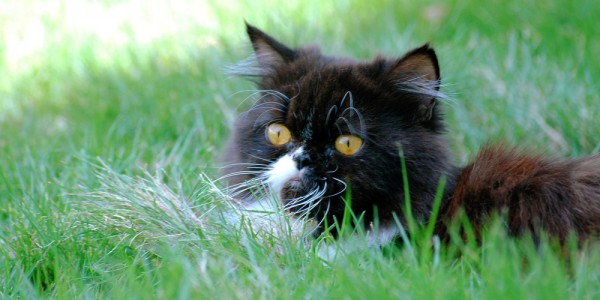META-Health doesn’t only explain the ‘whys’ behind our human symptoms and reactions, it helps us to understand all creatures’ patterns and behaviours.
As novelist Meg Rosoff noted in a recent issue of Intelligent Life magazine, ‘anyone who deals with animals will instinctively confirm… no two dogs, horses, cats, cows or (I’m told) crocodiles have the same nature. Animals experience joy, love, pain and loss; yet we express surprise when elephants mourn a dead baby, or whales carry a suffering pod-member to the surface to breathe’.
This emotional response to significant life situations is especially clear with domesticated animals. We’ve had several fascinating case studies submitted by META-Health trainees about their pets; dogs, a horse, and even an over-sexed rabbit. Here’s a mini case study I observed today – and a question for those into META-Health…
As darkness falls
I often go for a walk at dusk. I used to think it was because I was so disorganised with time that I left it until late in the day. Recently, when writing my post on the Summer Solstice, I took a closer look at the Personality Sun in my Human Design chart. It’s gate 36, ‘the darkening of the light’. I realised that my liking for this time of day is perhaps more intrinsic than I’d believed! But that’s another story. What’s key here is that cats are often out and active at dusk too. So I often glimpse them prowling around.
Wrapped up for winter on an evening walk a few months ago, I encountered a very friendly cat in a neighbouring street. While most cats dart away when a stranger approaches, this one came right up to me, nudging and circling me to pet him for as long as possible. He even followed me several metres down the road as I moved away. The second time I was walking that way, it was grey and drizzling. Apparently cats aren’t fond of rain. But there he was, sitting on his front door mat, and the same thing happened. Perhaps he was locked out, seeking company because he felt the cold?
The three times convincer
This evening, as the sun set on a warm day, I passed that way for the first time in a while. Sitting there again, the sociable creature ran to me as soon as I spotted him. Purring and rubbing against my legs as I petted him, I considered just how unusually friendly, even needy, he seemed. I noticed he had thick black fur, white socks, hazel mottled-looking eyes and then – a common but interesting symptom.
‘Aha’, the cat’s behaviour suddenly made sense. With META-Health, especially for those first learning, we usually work backwards from a physical symptom to the underlying cause. We start with a presenting problem, such as back pain, diabetes or an allergy, and use questioning or kinesiology to uncover the mental and emotional pattern behind it. In this way, META-Health is the first approach that facilitates truly bio-psycho-social analysis: it allows us to uncover the interconnectedness between symptom (bio), thoughts and emotions (psycho), and the situations that stimulate this reaction as well as how the person, or in this case, animal, responds (social).
META-Health Analysis reversed
On our higher level trainings, where we explore constellations (psychological complexes in which physical symptoms aren’t always immediately obvious), we do things the other way round. We explain how to notice health issues from a person’s behaviour. We could say its social-psycho-bio enquiry.
This is how it happened with the cat. I noticed his behaviour (social), then his symptom (bio). Of course, the psychological link is missing: we can only guess at the thoughts a cat has! In this case, if he had human language, META-Health tells us that his thoughts would be along the lines of ‘I feel cut off and want some human contact’, ‘I feel separated from my family’, ‘I dislike being shut outside’, or ‘I crave touch and love to be stroked’. There may even be an internal conflict between wanting to be outside and independent, and wanting to be loved and fussed. Making contact and getting some attention from a passer by seemed to bring him into resolution, especially if the theory holds that purring is a sign of contentment!
Bio-logical behaviour
The question is, what was the cat’s symptom and why?
Please share your thoughts and answers in the comments box below, or on our Facebook page. And if you have any META-Health stories about your pets or other animals, please share, we’d love to hear them!





1 Comment
Anna
07/08/2015My cat had lots of scabs, sore spots, and hair falling out on occasion. Now we are in our own place (with no dog!) and she can be with me whenever she likes she now has none of these symptoms. So my vote is one or more of the same? Some of the language also suggests the possibility of an abandonment/isolation conflict which in resolution could lead to releasing of liquid from the body too, i.e with weepy eyes? Look forward to finding out what it is! xx
Leave A Response